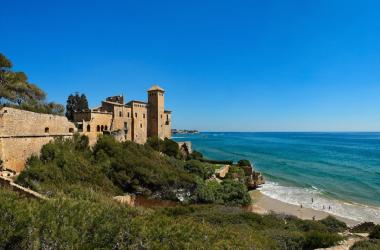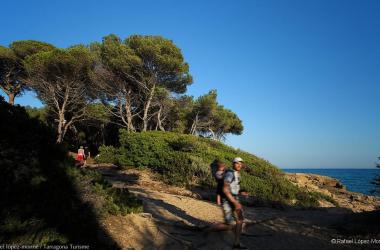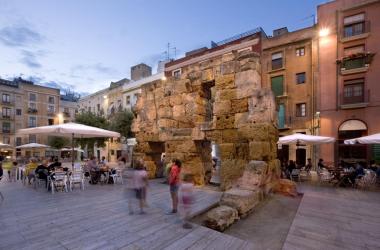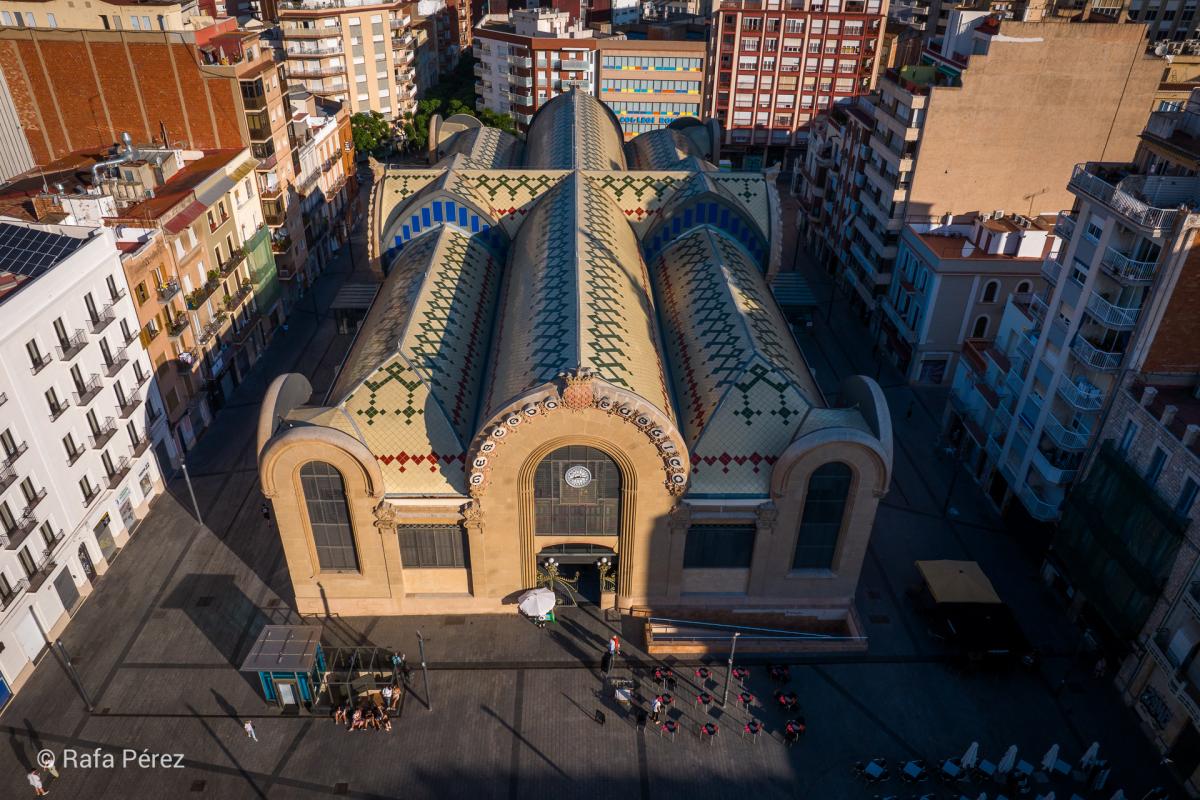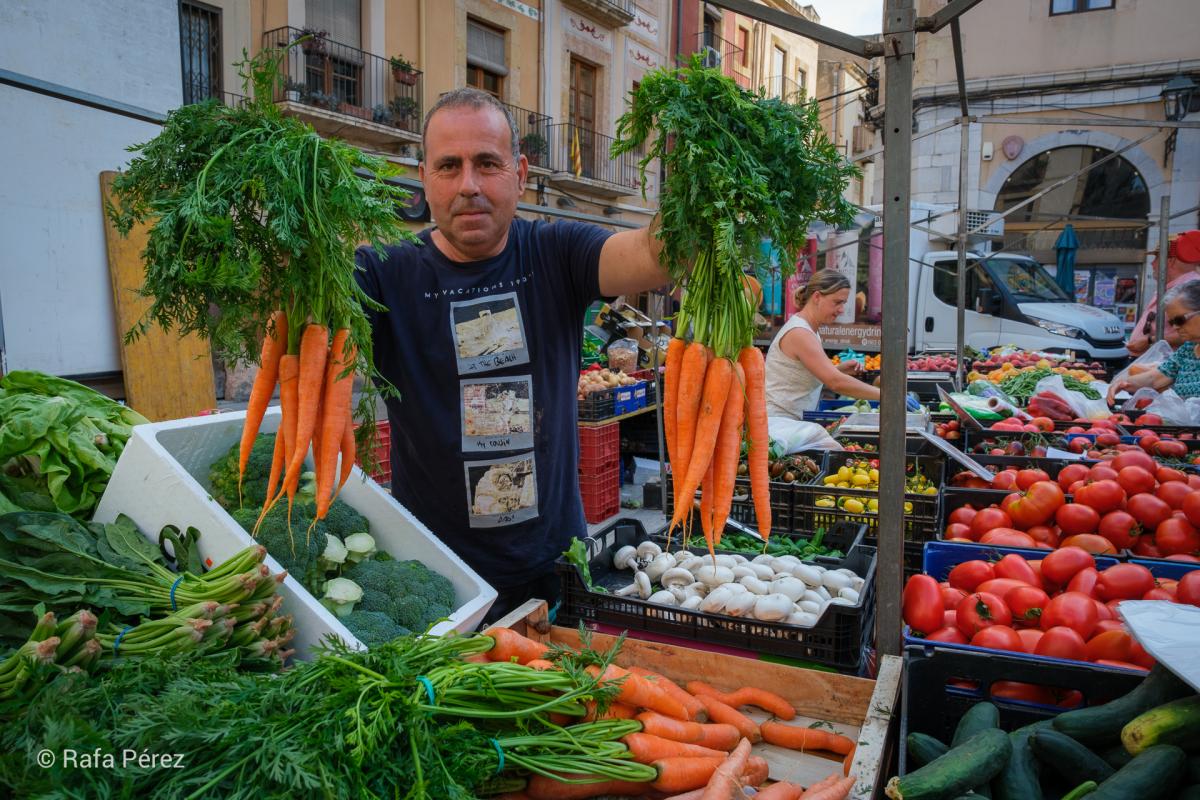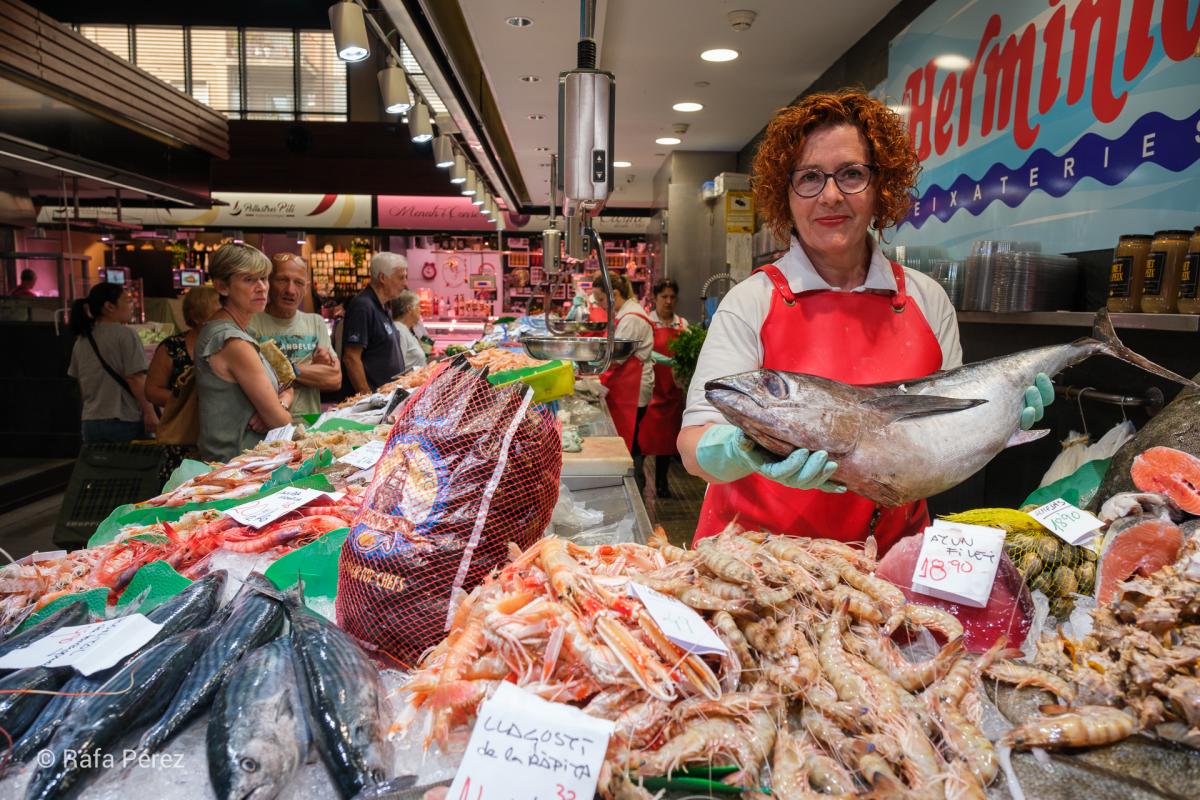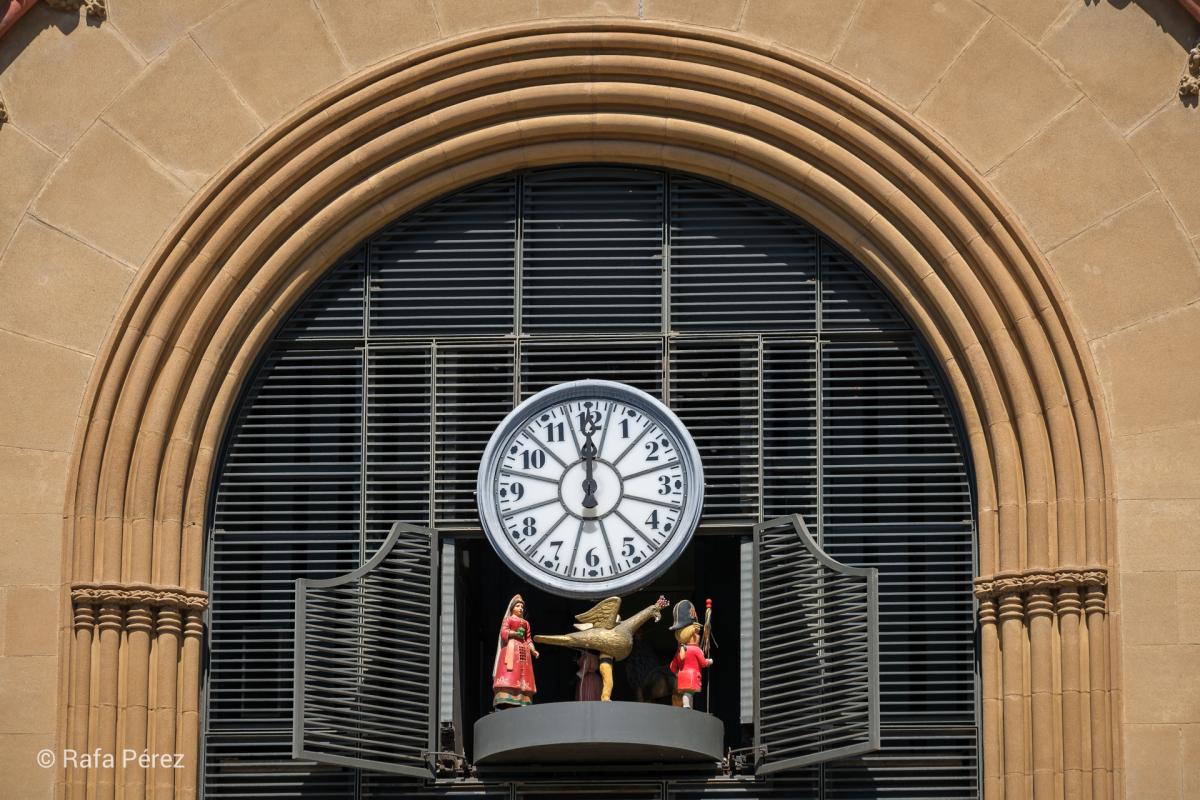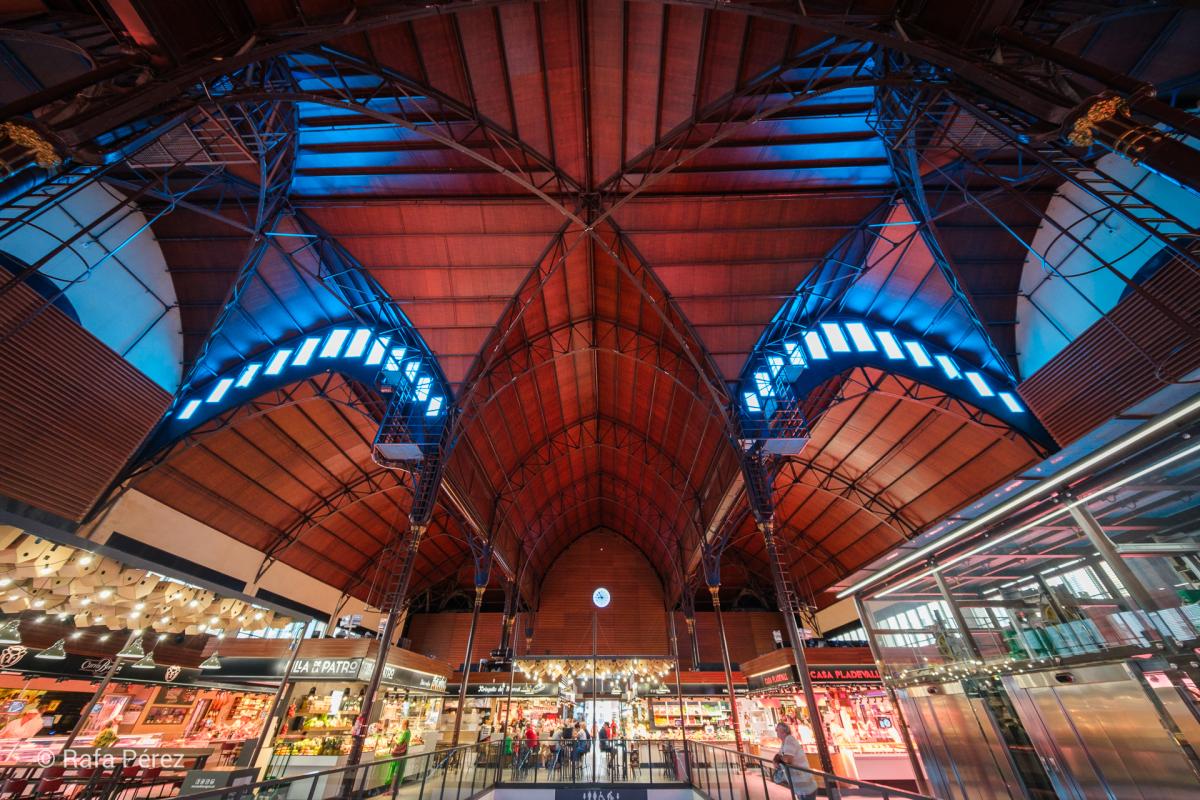Oranges in winter, tomatoes in summer. Tarragona's municipal Markets
They say that to really get to know what cities and the people who live in them are like, you have to look for the key to their markets
One of the best ways to take the pulse of a city and to know what is going on in its streets is to visit its markets. Now, and two thousand years ago. In the ancient Roman calendar, prior to the Julian calendar that orders our days, weeks had eight days. The importance of this cycle lay in the fact that people who lived in the countryside had a fixed day to go and sell their agricultural products, because on the ninth, in Roman cities, the nundinae were celebrated: market day.
Tarraco was no exception. Next to the entrance gates to the city were the stabulae, a kind of shelters with stables where people arriving from the surrounding area could leave their wagons and animals. Fruits, vegetables, and legumes were displayed in travelling stalls consisting of simple boards on trestles. There is no information on the precise location of the macellum (market) of Tarraco in those days, but on the model studied in cities such as Pompeii, commercial life probably took place in the lower part of the city, around the Local or Colony Forum and in the port district. The description of the Roman markets fits, with little change, with that of the market held twice a week in the Plaça del Fòrum. If we play at differences, we can say that the wife of Flamen Dialis, the priest of Jupiter, no longer sacrifices a lamb in honour of this god of Roman mythology and that the teachers no longer declaim in public so that their knowledge reaches the market's visitors. As for the rest, everything remains the same, the farmers come from the fertile orchards of Camp de Tarragona and display all the freshness of their produce in simple stalls.
Home-grown, organic, and local produce at the Fòrum market
The Fòrum market is one of those places where you awaken some of the senses that have remained dormant due to intensive farming practices, where you realise once again that fruit and vegetables smell, or that oranges and tomatoes, like warm days and swimming costume days, have their moment. But the most important thing about this market is not what is visible, but what underlies all the encounters that take place there: there are greetings and smiles and trust; if you pay a little attention, it is easy to see that conversations revolve around transcendental news, not about politics or the economy, but those that affect our people.
Montse has been selling eggs and honey in one of the corners of the Fòrum market since she was 20 years old and is now 68 years old. "This is Joan", she says by way of introduction when one of the people approaches her stall. She doesn't even have to ask, Montse places a dozen and a half of eggs directly between the cartons, with a mixture of decision and delicacy - let's not forget that these are eggs. All the sellers agree that the great value of the market is the people. "You'll see when we retire", says Montse, almost fearful of that moment, which is close at hand. In the neighbouring stall, Alejandro and María José sell home-grown fruit and vegetables, as they themselves and the numerous signs on the produce advertise. Organic and local, that is also the banner of the stall called I un rave. Their tomatoes - you have to get up early to get hold of a good assortment - are as varied as we are. In the box of the same type, there are big and small ones; with wrinkles and with smooth skin; more attractive at first sight or very juicy inside. What is it about all tomatoes being the same, say these farmers from Valls?
Discover the Central Market where you can buy, taste, learn and get caught up in the heartbeat of the city
A visit to the Central Market is worthwhile, of course, for the gastronomic products, but also for architectural reasons. The building was designed by Josep Maria Pujol de Barberà, who incorporated some modernist elements in the details and designed a space supported by cast iron columns with the aim of letting in light and creating a greater sense of spaciousness. Under this spectacular roof we find the same camaraderie as in the market in the historic centre and also the abundance of the proper name in the treatment. Among the stalls, of course, we can find good fresh fish from our coast; the sweet creations of the small stall of Cal Jan, a Torredembarra-based patisserie that has won the award for the Spain´s best panettone; the meats or Magda's selection of cheeses and her advice on how to make the perfect board.
See the carillon clock at the Central Market in action
Every day at 12 noon and 6 p.m., the doors of the clock on the façade open and the carillon starts up with seven figures representing characters from the Seguici Popular (literally “popular retinue”) of Santa Tecla procession, figures moving while the “Amparito Roca”-song plays. At the end of the parade, many customers put down their shopping baskets for a moment and burst into applause, some even after taking a few steps to the sound of this well-known pasodoble (a light march of Spanish origin).
It is time to pick up the basket and return to the markets
The municipal markets offer something as simple as a return to the origins, ecological and local products just as they did two thousand years ago. The peasant trade, despite some signs of recovery, is not at its best. Neither is the fisherman's trade. Buying at municipal markets is a way of contributing to the recovery and consolidation of these tough professions, which are more necessary than ever in the current climate crisis. Whether out of conviction or out of a touch of romanticism; whether for health reasons or simply because we like to give and be given a good morning, it is time to pick up the basket and return to the municipal markets.
In Tarragona there are several municipal and street markets throughout the week, all specialising in fresh produce. In addition to the mentioned Central and Fòrum markets, there are markets in Plaça dels Carros, Bonavista, Torreforta, Sant Salvador, Sant Pere i San Pau and La Móra.



